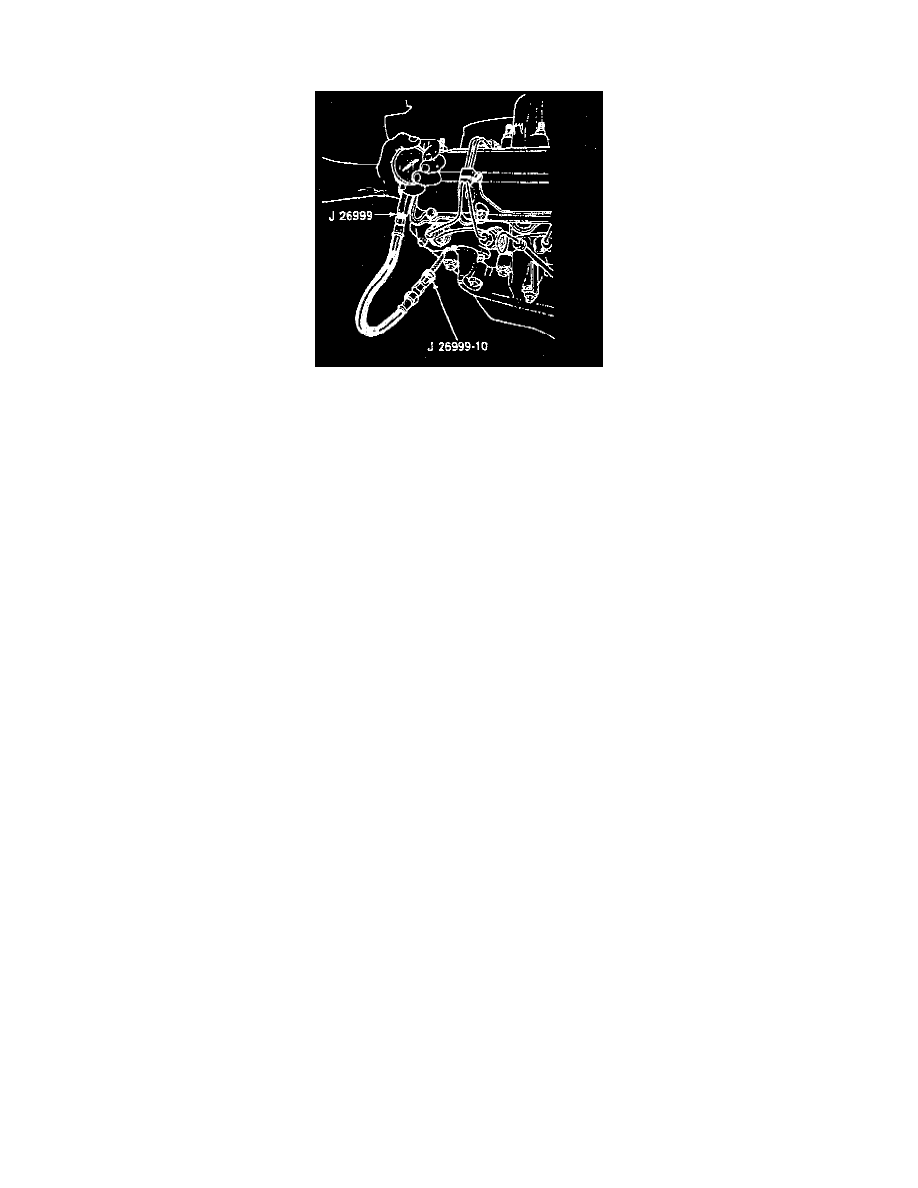C 1500 Truck 2WD V8-393 6.5L DSL Turbo (1994)

Compression Check: Testing and Inspection
ENGINE COMPRESSION TEST
-
Tools Required
-
J 29664 Cover Set
-
J 26999 Compression Gauge
-
J 26999-10 Compression Gauge Adapter
-
Or equivalents
1. Remove the air cleaner. Cover the opening in the intake manifold with J 29664.
2. Disconnect the pink wire from the fuel solenoid terminal of the injection pump.
3. Disconnect the wires from the glow plugs.
4. Remove all of the glow plugs.
5. Screw the J 26999-10 into the glow plug hole of the cylinder that is being checked. Connect the J 26999-10 to the J 26999.
6. Make sure that the batteries are fully charged. The engine should be at normal operating temperature.
7. Crank the engine. Allow the engine to turn over six times (six "puffs") per cylinder.
CAUTION: Do not add oil to any cylinder during a compression test as extensive engine damage may result.
8. Take the compression test at each cylinder and record the readings.
9. The lowest reading cylinder should not be less than 80 percent of the highest reading cylinder. No cylinder should read less than 2625 kPa (380
psi).
-
Normal: The compression builds up quickly and evenly to the specified compression on each cylinder. The reading should be within the
2625-2760 kPa (380-400 psi) range.
-
Leaking: The compression is low on the first stroke. The compression builds up on the following strokes but does not reach the normal level.
